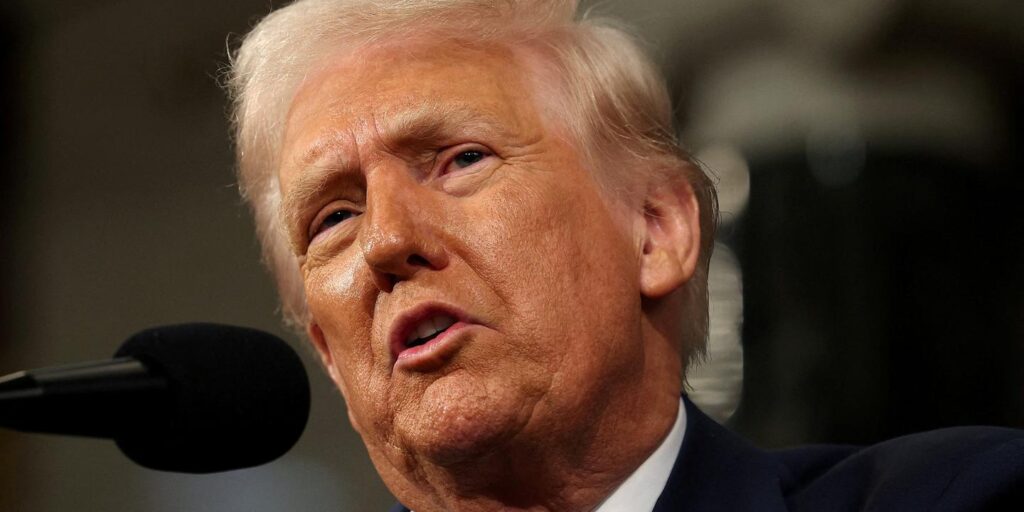Consumer spending ticked up slightly after a near halt in the first quarter, but private sector investments plunged in the second quarter.
Economic growth in the United States has bounced back more than expected in the second quarter, but the data grossly overstates the economy’s health as declining imports accounted for the bulk of the improvement and domestic demand rose at its slowest pace in two and a half years.
The US economy grew by 3 percent at an annualised pace in the second quarter, according to Commerce Department released data on Wednesday, beating economists’ expectations after a contraction of 0.5 percent in the first quarter of the year.
Growth in consumer spending ticked up moderately by 1.4 percent across both goods and services, after almost braking in the first quarter as US President Donald Trump’s tariffs created uncertainty.
Imports dropped sharply – after the rush to stockpile in the first quarter in an effort to beat tariffs – which added 5 percent to growth.
The White House touted the report, with press secretary Karoline Leavitt saying in a statement that “President Trump has reduced America’s reliance on foreign products, boosted investment in the US, and created thousands of jobs — delivering on his promise to Make America Wealthy Again. The data is clear, and there are no more excuses — now is the time for ‘too late’ Powell to cut the rates!”
Jerome Powell, chair of the US Federal Reserve, has been under pressure from Trump for months cut interest rates but has repeatedly said the Fed will wait to see how the economy evolves under the tariff pressures before deciding if it will reduce its key interest rate.
‘Policy-initiated slowdown’
Despite claims that there is boosted investment in the US, the data says otherwise as private sector investment plunged 15.6 percent in the second quarter.
“Today’s GDP release only further confirms that we’re in the midst of a policy-initiated slowdown. The top-line number looks superficially better but only because of some snapback from the tariff-driven quirks to trade and inventories that temporarily weighed on output in Q1,” Skanda Amarnath, executive director of Employ America and former Federal Reserve economist, said in a statement provided to Al Jazeera.
This comes alongside a drop in inventories of 3.2 percent and a slowdown in non-durable goods manufacturing, which grew at a pace of 1.3 percent, down from 2.3 percent in the previous quarter.
“This second quarter estimate reflects this administration’s chaotic trade environment with a decrease in imports through a decrease in nondurable goods. In addition, there has also been a decrease in exports, led by cars, engines, and parts, a reflection of existing tariffs on steel, aluminum, and automobiles,” Gbenga Ajilore, chief economist at the Center on Budget and Policy Priorities, said in a statement provided to Al Jazeera.
Contrary to the White House’s claims, job growth also slowed. Last month’s US Labor Department jobs report showed limited traction in sectors impacted by tariffs, including wholesale trade. The Labor Department’s July report is slated to be released on Friday. The ADP private sector payroll report released on Wednesday showed 104,000 jobs added last month and revised figures from the previous month to a decline of 23,000 jobs.
The gross domestic product (GDP) report showed that final sales to private domestic purchasers — otherwise known as business and consumers — showed an expansion of 1.2 percent for the quarter, marking a slowdown from the 1.9 percent in the first quarter of the year.
“This morning’s report makes clear that tariffs and uncertainty were slowing the economy even in the first half of the year,” Daniel Hornung, senior fellow at MIT and former deputy director of the National Economic Council, said in a statement provided to Al Jazeera.
US markets remained relatively flat on the GDP report as investors waited for the Federal Reserve’s policy decision on interest rates, which is widely expected to be held steady at 4.25-4.50 percent.


